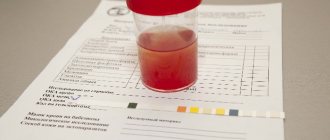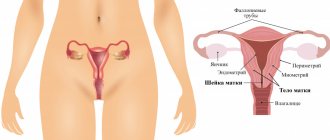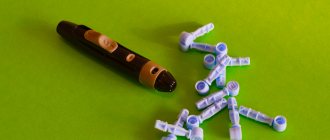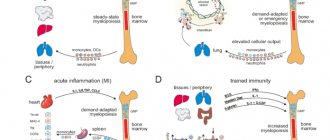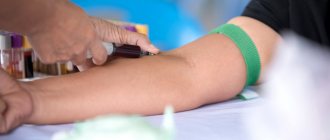The most important thing that parents should understand about acetone in a child is that it is not a disease, but a natural physiological process associated with metabolism. The body resorts to this option as an alternative way to obtain energy. Acetone in children has nothing to do with bacteria and viruses. An increase in acetone in the urine signals a deficiency of glucose in the body, and therefore the concentration of ketones (products of partial breakdown of fats) in the blood increases.
With the information support of pediatricians at the Amel Dental clinic, we have prepared an article in which we talk about the mechanism of acetone formation in children, its causes and symptoms, and most importantly, how to react correctly, what measures to take to cope with the problem.
What are ketone bodies?
The content of the article
These are compounds that arise as a result of biochemical changes in fats. Ketone bodies are formed in the liver, from where they enter the blood. In a healthy person, the rate of ketone bodies in the blood should not exceed 0.2 mmol/l.
Mechanism of formation of ketone bodies
Glucose is the main energy source for cells, but when it is deficient, energy comes from fats. There are 3 ketone bodies present in human urine and blood: B-hydroxybutyric acid, acetoacetic acid, and acetone.
Ketones in urine - pay attention
The condition in which ketone bodies are present in the urine is called ketonuria. If ketone bodies are found in the urine, this means that the body is using fats for energy. There can be many reasons that cause ketonuria, along with associated symptoms.
Symptoms occur when the body is unable to utilize carbohydrates. which leads to fat burning in diabetic patients. In patients without diabetes, ketonuria may be caused by a lack of carbohydrates. The main thing is to determine the cause of ketones in the urine as soon as possible and begin appropriate treatment. Every day of delay matters.
Prevention measures
Parents whose child is prone to this disease should have glucose and fructose preparations in their home medicine cabinet. Also, you should always have dried apricots, raisins, and dried fruits on hand. The baby's meals should be fractional (5 times a day) and balanced. As soon as any sign of an increase in acetone appears, you should immediately give the child something sweet.
Children should not be allowed to overexert themselves, either psychologically or physically. Daily walks in nature, water procedures, normal eight-hour sleep, and hardening procedures are shown.
Between attacks, it is good to carry out preventive treatment of crises. This is best done in the off-season twice a year.
Symptoms that may accompany ketonuria
If there are ketones in the urine or symptoms that may be associated with the presence of ketones in the urine, you should immediately consult an endocrinologist. Symptoms appear when ketonuria is already progressing.
Signs that may indicate the presence of ketone bodies:
- characteristic - fruity smell from the mouth - acetone, which is present in the exhaled air, is responsible for it ( this is the most characteristic symptom of ketonuria);
- high blood glucose levels greater than 300 mg/dL;
- skin color has changed, redness or vice versa - pale color;
- gastrointestinal symptoms - diarrhea, vomiting, abdominal pain;
- frequent infections;
- chronic fatigue;
- dry mouth and increased thirst;
- polyuria.
Symptoms of increased acetone in a child
The age at which the first signs of acetone may appear in a child is 2-3 years. The situation may worsen (cases of acetone syndrome become more frequent) at 7-8 years of age. After 12 years, such signs stop in most children.
The most common signs of acetone in children:
- nausea, frequent bouts of vomiting with the smell of acetone, recurring for one to several days;
- abdominal pain;
- loose stools with a strong smell of acetone;
- smell of acetone from the mouth;
- infrequent urination, reduced amount of urine when urinating;
- loss of appetite, general weakness;
- the temperature with acetone rises to high values (38-38.5°) and it cannot be brought down by any means.
Despite the rather eloquent symptoms, only a qualified doctor can diagnose a child with acetonemia, since the smell of acetone may indicate a lack of insulin (high probability of diabetes). Therefore, if alarming signs appear, you should never self-medicate; you must make an appointment with a pediatrician, who, in turn, can refer the child for further examination to other specialized specialists.
Dangerous symptoms
Signs that your child requires emergency medical care:
- attacks of vomiting do not stop and, on the contrary, occur more often, while it is not possible to give the child water to drink between attacks - there is a high risk of dehydration, an IV is required;
- the child’s body temperature has reached 39°C or higher, antipyretics are not effective;
- the child becomes very lethargic, is semi-conscious or loses consciousness - a pronounced sign of the toxic effect of acetone on the brain.
In such conditions, it is necessary to urgently bring the child to the hospital or call an ambulance.
Study of urinary ketone bodies
Ketone bodies can be detected using urine strip testing. You need to donate mid-stream morning urine, when the first portion of urine goes into the toilet, the middle part goes into a specially prepared sterile container, and the last part goes back into the toilet.
Urine analysis testing
Before collecting urine, you need to wash yourself. During the period leading up to the urinalysis, do not change your diet or do too much exercise.
A normal urine body test for ketones is negative. If ketone bodies are detected in the urine, treatment should be started immediately.
Causes of ketone bodies in urine
- Diabetes, most often type 1 diabetes
. A diabetic's body cannot cope with burning carbohydrates. The reason for this is a deficiency of insulin, due to which fat reserves are mobilized for energy. As a result of these changes, ketone bodies are formed. Excess ketones accumulate in the blood, a condition called ketonemia. The body suffering from diabetes, wanting to get rid of excess ketones, releases them along with urine, as well as with exhaled air. Most often, ketone bodies in the urine are accompanied by hyperglycemia, that is, high levels of glucose in the blood, as well as the presence of glucose in the urine (glucosuria). An excess of ketone bodies in the body leads to the development of ketoacidosis. This is a life-threatening condition. Factors predisposing to ketoacidosis include: improper use of insulin, sudden cessation of insulin therapy, chronic infections, life-threatening conditions: stroke, heart attack, pancreatitis. - Low carbohydrate diet
. During prolonged fasting, ketone bodies are formed during excessive B-oxidation of fats. - Chronic alcoholism.
- Other reasons
- temporarily in case of severe vomiting, chronic fever, excessive physical exertion.
Having determined the cause of the presence of ketone bodies in the urine, the doctor will begin appropriate treatment.
Recommendations from Amel Dental pediatricians
Parents should understand that if a child has ever had elevated acetone, then there is a possibility of a relapse. In this case you need to be prepared:
- always have sweets on hand in case of another crisis;
- have a glucometer and test strips in your first aid kit;
- Have glucose ampoules in your medicine cabinet.
Increased acetone in children (from infants to 11-12 years old) is considered the norm, associated with the age-related physiological characteristics of the child’s body.
The older the child, the lower the risk of a critical increase in acetone. Knowing the reasons and mechanism for the appearance of acetone, you can take preventive measures:
- provide the baby with a complete, balanced diet, and, if necessary, adhere to the diet recommended by the doctor;
- control the level of stress in the child (training, physical activity) - they must correspond to the age and capabilities of the child;
- avoid emotional, physical, mental overload, protect the child from stress;
- temper and strengthen the baby’s nervous system.
Ketones in urine - the rate of acetone in urine and interpretation of the result
The norm for ketones in urine is the absence of ketone bodies. Any positive result (positive ket in the urine) means a problem in the body and requires further diagnosis. Traces of ketones in urine or low levels, such as urinary ketones 5 or urinary ketones 15 mg/dL, may indicate:
- intense physical effort;
- lack of calories in the diet;
- vomiting;
- fever;
- burns;
- alcohol consumption.
Intense physical effort
Fever
Most often, mild ketonuria occurs without symptoms that may indicate diabetes or ketoacidosis.
Excessively high levels of urinary ketones, that is, a test result indicating a urine ketone level of 50 mg/dL or more, may indicate more serious health problems such as severe debilitating diseases, thyroid disease, or renal glycosuria. High ketones in urine also accompany decompensated or undiagnosed and untreated diabetes.
Ketones in a child's urine - reasons
Acetone in the urine in children is most often accompanied by vomiting or fever. Sometimes this is a sign of malnutrition or adrenal insufficiency - then high levels of ketone bodies in children's urine are accompanied by hypoglycemia, that is, low blood glucose levels. Conversely, ketones in the urine when glucose levels are low and the liver is enlarged may indicate the presence of glycogenosis.
Ketone bodies and glucose in a child's urine may indicate diabetes; Type 1 diabetes is most common in young adults. To determine whether a child has ketones, it is necessary to first measure fasting blood glucose levels. Further diagnosis depends on the glucose result.
Causes of acetonemia
The main factors that influence increased acetone in a child:
- unbalanced diet – lack of carbohydrates (source of glucose), predominance of proteins and fats;
- systematic undereating and, conversely, overeating;
- deficiency of enzymes responsible for the absorption of carbohydrates;
- excessive consumption of glucose - with increased mental and physical stress, due to injury, in stressful situations, with frequent infectious diseases, especially if the symptoms include vomiting and diarrhea.
Depending on what caused the disorder, there are two types of acetone in children:
- primary – related to nutrition and lifestyle;
- secondary – a consequence of previous infection, diseases of the endocrine system, central nervous system.
Separately, we should highlight primary idiopathic acetonemic syndrome, which is associated with a genetic factor.
Ketone bodies in urine during pregnancy - what do they show?
Ketones in urine are not uncommon during pregnancy. Women who suffer from frequent vomiting in the first trimester of pregnancy show the presence of ketones very often. In addition, lack of appetite during pregnancy or skipping an evening meal the day before urine tests can lead to an increase in ketone bodies in the blood and urine.
Since high levels of acetone in the urine of a pregnant woman may indicate gestational diabetes, the condition always requires further diagnosis. Then, in addition to ketones, glucose may also be observed in the urine of a pregnant woman, and there may also be symptoms of ketoacidosis.
Diet
An important component of effective therapy for acetone in children is the correct diet. Basic principles of nutrition with increased acetone:
- 1
The first day you cannot feed the baby. - 2
From the 2nd day, provided that the attacks of vomiting have decreased, you can give the child liquid rice or buckwheat porridge, white bread croutons, lean vegetable soups, baked apple, banana. Meals are fractional - often, in small portions.
- 3
After a week, you can give your baby boiled eggs, turkey meat, heat-treated fruits and vegetables (boiled, steamed), porridge from various cereals, and fermented milk products.
Products that should be strictly excluded from the diet:
- any meat except turkey meat;
- broths;
- some vegetables (tomatoes, cabbage);
- legumes;
- kiwi;
- any sausages, smoked meats;
- marinades, dishes with added spices.
You need to follow the diet for at least 2-3 weeks.
Traces of ketones in urine - treatment
Ketonuria is not a disease, but a symptom of a disease, so it cannot be cured. To restore urinary ketone levels to normal, the underlying condition must be eliminated or treated. It is necessary to compensate for disturbances in acid-base and water-electrolyte metabolism. This is especially important in the case of diabetes, a complication of which can be ketone coma.
To get rid of ketones in the urine in diabetes, it is necessary to normalize the levels of glucose and insulin in the blood. In case of ketonuria caused by malnutrition, it is necessary to change the diet to a high-calorie diet and ensure an adequate caloric balance. During vomiting, antiemetic drugs are prescribed.
ONLINE REGISTRATION at the DIANA clinic
You can sign up by calling the toll-free phone number 8-800-707-15-60 or filling out the contact form. In this case, we will contact you ourselves.
How to treat acetone syndrome
If an acetonemic crisis develops, the child must be hospitalized. Dietary correction is carried out: it is recommended to consume easily digestible carbohydrates, strictly limit fatty foods, and provide frequent drinking in large quantities. A good effect is obtained from a cleansing enema with sodium bicarbonate, a solution of which can neutralize some of the ketone bodies that enter the intestines. Oral rehydration using combined solutions (Orsol, Rehydron, etc.), as well as alkaline mineral water, is indicated.
The main directions of treatment of non-diabetic ketoacidosis in children:
1) A diet (enriched in fluids and readily available carbohydrates with limited fat) is prescribed to all patients.
2) The administration of prokinetics (motilium, metoclopramide), enzymes and cofactors of carbohydrate metabolism (thiamine, cocarboxylase, pyridoxine) promotes an earlier restoration of food tolerance and normalization of fat and carbohydrate metabolism.
3) Infusion therapy:
- quickly eliminates dehydration (deficiency of extracellular fluid), improves perfusion and microcirculation;
- contains alkalizing agents, accelerates the restoration of plasma bicarbonate levels (normalizes acid-base balance);
- contains a sufficient amount of easily accessible carbohydrates, which are metabolized in various ways, including those independent of insulin;
4) Etiotropic therapy (antibiotics and antiviral drugs) is prescribed according to indications.
In cases of moderate ketosis (acetonuria up to ++), not accompanied by significant dehydration, water-electrolyte disturbances and uncontrollable vomiting, diet therapy and oral rehydration are indicated in combination with the prescription of prokinetics in age-related doses and etiotropic therapy of the underlying disease.
When treating acetone syndrome, the main methods are those aimed at combating crises. Supportive treatment is very important to help reduce exacerbations.
